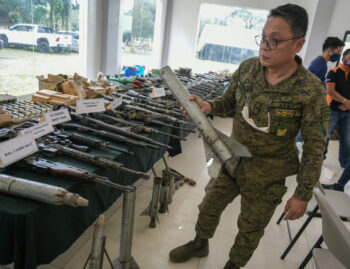NOW SHOWING in most cinemas across the country, Alejandro G. Inarritu’s film THE REVENANT starring Leonardo DiCaprio who has just won the Golden Globe award for Best Actor is could possibly win the Oscar very soon. Written by Inarritu and Mark Smth, based on Michael Punke’s novel, this powerful epic based on actual historical events follows the experiences of frontiersman and fur trapper Hug Glass in 1823 in what is now the area covered by the States of Montana and South Dakota.
This film the plot of which goes back almost a hundred years ago connects with us today in Mindanao in more ways than one. One parallel is between the aggressive colonizing drive of white Americans (of both English and French ancestry) with tragic results for the native Americans – specifically the Arikara and the Pawnee people – in the early 1800s on their side of the planet and the same aggression against our own Lumads in the early 1900s on our side. Another parallel too is what happened there and then and here and now.
THE REVENANT shows how ugly human behavior becomes when confronted with greed, ambition and betrayal. In the 1820s, a group of trappers under the command of Captain Andrew Henry hunted for pelts in the unsettled wilderness; these were then the resources that could be extracted from the areas of the native Americans who suffered with the encroachment of these armed men. The Arikara Native Americans tried their best to protect their tribe and interests from the harsh treatment of the colonizers. But as competition became intense to secure the resources, violence erupted among them. All these would impact on the diminishment of the native Americans’ control over their ancestral territory which eventually would erode their identity and culture.
There have been other Hollywood films and TV series that dealt with this theme; the most memorable were Kevin Costner’s DANCING WITH WOLVES, the 1990 Oscar-winning film, adapted from the 1988 book written by Michael Blake which chronicled the tragic consequences of white American’s domination over the Lakota Indians. The film’s narrative followed the story of a Union Army lieutenant who travelled into the American frontier where those who manned a military post committed atrocities against the indigenous peoples. The film helped explain the tragic consequences of the policy of militarization and forced assimilation of the native Americans the tragic impact of which has persisted until today.
BURY MY HEART IN WOUNDED KNEE was a 2007 television adaptation from the book of the same name written by Dee Brown. Written by Daniel Giat and directed by Yves Simoneau and produced by HBO Films, this epic movie was based on the history of the Sioux nation in the 1860s-70s as they transitioned from a traditional way of life to being forced to live on reservations. As with the other films, the colonization of the Sioux would eventually strip them of their identity, dignity and sacred abode. What drove the colonizers to their territory was the greedy search for gold and other resources.
Sounds very familiar for us Mindanawons. The book and the TV series should be required reading and viewing for all our young people across Mindanao, for them to have a better understanding of how the American policy forcing the Lumads to assimilate during the entire American occupation of our Republic (1898-1946) had left a residue of a colonial aggression that has not ended. Until today, the uplands of Mindanao where the Lumads struggle to maintain a sense of human dignity remain a landscape that attract the greed of those seeking to have full control over the territories in order to monopolize the extraction of the remaining natural resources. This is the root cause of why the Lumad killings continue to take place.
If one were to put side by side the historical facts between what took place in the frontiers of the U.S.A during the time of President Ulysses S. Grant, of the laws presented by the likes of Senator Henry L. Dawes that had implications for military and educational interventions among the indigenous peoples as well as those during the times of General Leonard Wood and functionaries such as Lt. Edward Bolton here in Mindanao that impacted the Lumads, only the names of characters would change. The very essence of colonization is basically the same.
We are indebted to novelists and filmmakers – and those behind THE REVENANT should be rewarded for this, especially with the Oscar statuette – if only because they help us to remember those atrocities so that we could learn the needed lessons and for future generations not to repeat the same mistakes. For alas – memories are short and we need to be constantly reminded of the past so we can face the future with brighter prospects for the same of the coming generations. One can only wish that we, Filipinos and Mindanawons – especially our writers, filmmakers and artists – will pursue this particular field beyond those historical films such as General Luna.
And perhaps, with these novels and films, we honor the dead – those who died in such violent encounters where humanity has been so depleted as to make of us seem monsters – as the souls of the dearly departed haunt us across the layers of all kinds of existence. [Redemptorist Brother Karl Gaspar is Academic Dean of the Redemptorists’ St. Alphonsus Theological and Mission Institute (SATMI) in Davao City and a professor of Anthropology at the Ateneo de Davao University. He was author of several books, including “Desperately Seeking God’s Saving Action: Yolanda Survivors’ Hope Beyond Heartbreaking Lamentations.” He writes two columns for MindaNews, one in English (A Sojourner’s Views) and the other in Binisaya (Panaw-Lantaw)]







